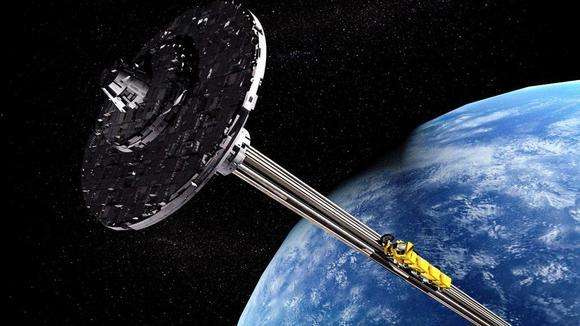The elevator of the future
The future development of elevators is not only a competition in terms of speed and length, but also more “concept elevators” beyond people’s imagination have emerged.
In 2013, the Finnish company Kone developed an ultralight carbon fiber “ultrarope”, which is far longer than existing elevator traction ropes and can reach 1,000 meters. The development of the rope took 9 years, and the finished product will be 7 times lighter than the traditional steel wire rope, with less energy consumption, and twice the service life of the former. The emergence of “super ropes” is another liberation of the elevator industry. It will be used in the Kingdom Tower in the Saudi Arabian city of Chidah. If this skyscraper is successfully completed, human buildings over 2,000 meters in the future will no longer be a fantasy.
There is not only one company that intends to disrupt elevator technology. Germany’s ThyssenKrupp announced in 2014 that its future new elevator technology “MULTI” is already in the development stage, and test results will be announced in 2016. They learnt from the design principles of maglev trains, intending to get rid of traditional traction ropes and use elevator shafts to make elevators rise and fall quickly. The company also claims that the magnetic levitation system will enable elevators to achieve “horizontal transportation”, and multiple transportation cabins form a complex loop, which is more suitable for large-scale urban buildings with high population density.
Indeed, the most ideal elevator on earth should be able to move at will in both horizontal and vertical directions. In this way, the form of the building will no longer be restricted, the use and design of public space will make the best use of everything, and people will be able to spend less time waiting and taking the elevator. What about extraterrestrial? The Elevator Port Group, founded by former NASA engineer Michael Lane, claims that because it is easier to build a space elevator on the moon than on the earth, the company can use existing technology to build it on the moon. He built a space elevator and said that this idea could become a reality in 2020.
The first to discuss the concept of “space elevator” from a technical point of view was science fiction writer Arthur Clark. His “Fountain of Paradise” published in 1978 had the idea that people can take an elevator to go sightseeing in space and realize more convenient exchange of materials between outer space and the earth. The difference between a space elevator and an ordinary elevator lies in its function. Its main body is a cable that permanently connects the space station to the surface of the earth for cargo transportation. In addition, the space elevator that is rotated by the earth can be made into a launch system. In this way, the spacecraft can be transported from the ground to a place high enough outside the atmosphere with only a little acceleration.
On March 23, 2005, NASA officially announced that the Space Elevator had become the first choice for the Challenge of the Century. Russia and Japan are not to be outdone either. For example, in the preliminary plan of the Japanese construction company Dalin Group, the solar panels installed on the orbital station are responsible for providing energy for the space elevator. The elevator cabin can accommodate 30 tourists and the speed is about 201 km/h, which takes only one week. You can enter the outer space about 36,000 kilometers from the ground. Of course, the development of space elevators faces many difficulties. For example, the carbon nanotubes required for the rope are only millimeter-level products, which are far from the actual application level; the elevator will sway due to the influence of the solar wind, the moon and the sun’s gravity; Space junk may break the traction rope, causing unpredictable damage.
In a sense, the elevator is to the city what paper is to reading. As far as the earth is concerned, without elevators, the distribution of population will be spread on the surface of the earth, and human beings will be limited to a limited, single space; without elevators, cities will have no vertical space, no dense population, and no more efficient resources. Utilization: Without elevators, there would be no rising high-rise buildings. In that way, it would be impossible for human beings to create modern cities and civilizations.
